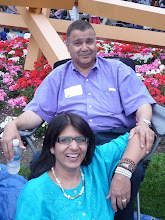While it is not surprising that wood is still used in many Macedonian villages to heat homes made essentially with concrete or slate blocks covered with a mortar-based plaster, modernized new stoves still used this form of fuel.
These stoves are approx 4x3 feet and the top is a steel hot plate with a hinged cover. When closed and covered with a pretty lace cloth, such as the one in my home it becomes a buffet and a place to keep the fruit bowl, my language books, vitamins, etc. The oven and the drawer beneath which served as additional storage for kitchen items is set to one side with two adjacent small 10”x10” compartments stacked one on top of the other. An exposed 5” sheet metal pipe cut into the side of the oven opposite the stacked small compartments vents the stove to the outside. Vents are ingeniously hidden behind ‘drywall’ back home. The top small compartment was used to burn the wood, and since the source of the heat is one side and the hot air escapes from the opposite side the entire surface of the hot plate is heated. I also presume the hot plate is not uniform is thickness or material as the heating is on side which had a small escape hole directly above the source of the heat to dissipate some heat. The large pot for slow cooking such as unpasteurized cow’s milk, sits on the far end and other cooking takes place on the hotter side.
It is a remarkable device, very 21st century in some ways and very traditional at the same time as it allows for cooking the ‘old’ fashioned way as well as a ‘modern’ oven, performing the dual functions of a cook stove and a heater for the home. This was used when the nearby mountains had a snowfall and temperatures dropped rapidly in the homes in the village. The electric space heater was put away while this took its place.
The appliance reminded me of Pioneer Days, when we taught the 3rd graders in school how a hundred tears ago women washed clothes using washboards and cooked in big kettles over a wood-burning wood stove that also served to heat the rooms in winter.
Even though I didn’t have enough vocabulary it was about this time that I asked why the bread was being made from refined white flour and not whole wheat. Whether we understood each other or not, I am not sure, but it was heartwarming to see Mom bring out a big bowl of whole-wheat grain. Pleasant thoughts of homemade whole wheat bread crossed my mind as we proceeded to clean the chaff from the grain. When I was about to toss the chaff and other contaminants we had picked out, they were mixed back into the remaining grain in the bowl. We were going to be served the clean grain, while the birds; ducks, chicken, pheasant, quail and the peacock got the leftovers!
I was quite sure she would produce a hand-mill to grind the grain from among her belongings and we will be making bread from the grain. However, that didn’t happen, but I learned something new. The whole-wheat grain was cleaned and boiled for over an hour on this stove – much more efficient that using the electric stove and served it with sugar – homemade cereal! May we have many more moments such as these! I now have whole-wheat cereal as an alternative to store bought cereal for breakfast. It also tastes better vastly better than wheat germ that we add to cereal.
Sunday, October 25, 2009
Subscribe to:
Post Comments (Atom)





No comments:
Post a Comment